SSC CGL - Detailed Guide 2025
Self-Paced Course

Maurya Empire and Post-Mauryan Period
Reference: Lucent GK, NCERT Class 6–12
Maurya Empire (321 BCE – 185 BCE)
Foundation and Key Rulers
- Founder: Chandragupta Maurya (with Chanakya’s help)
- Capital: Pataliputra (modern Patna)
- Key Rulers:
- Chandragupta Maurya
- Bindusara (expanded empire southward)
- Ashoka the Great (grandson; greatest ruler)
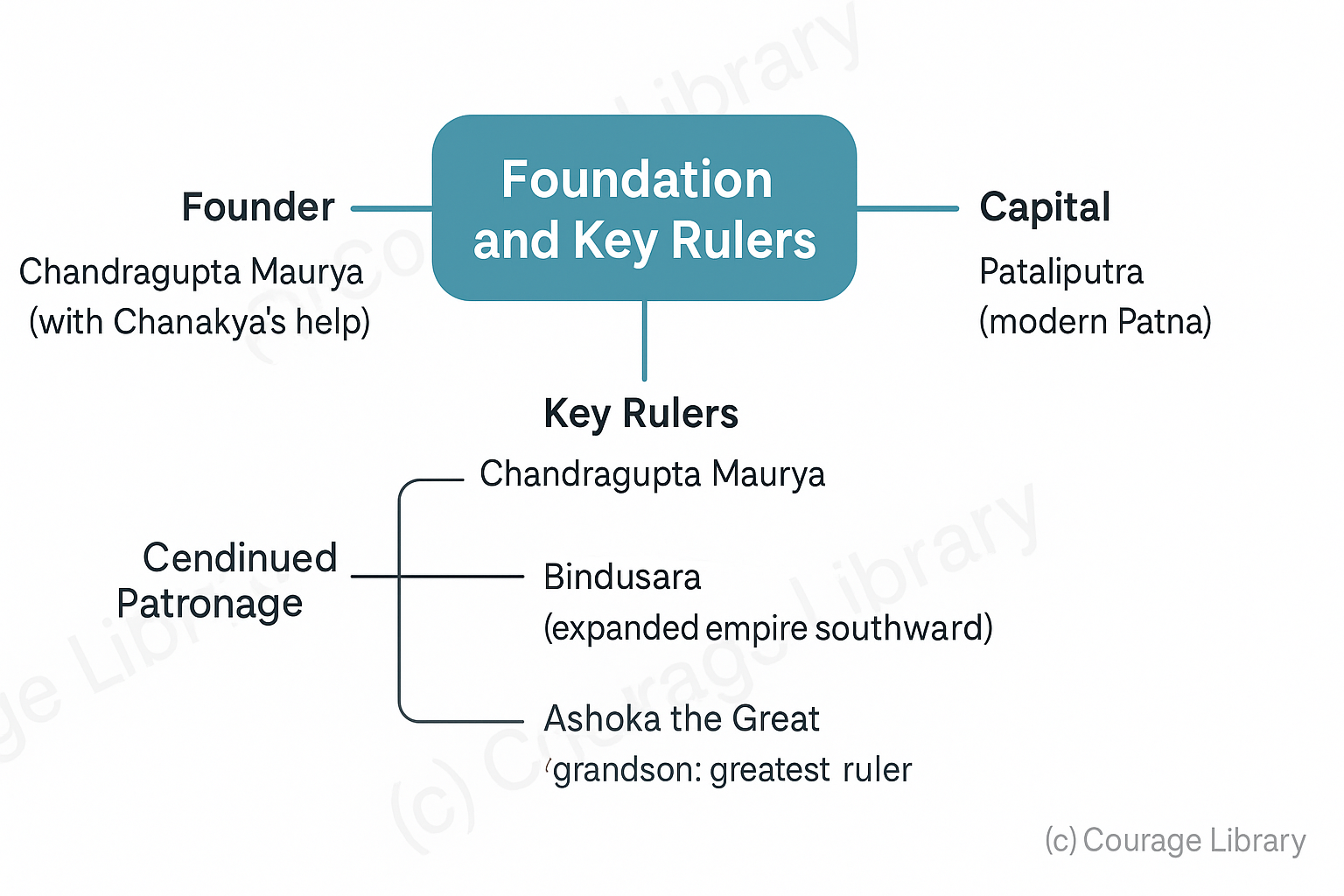
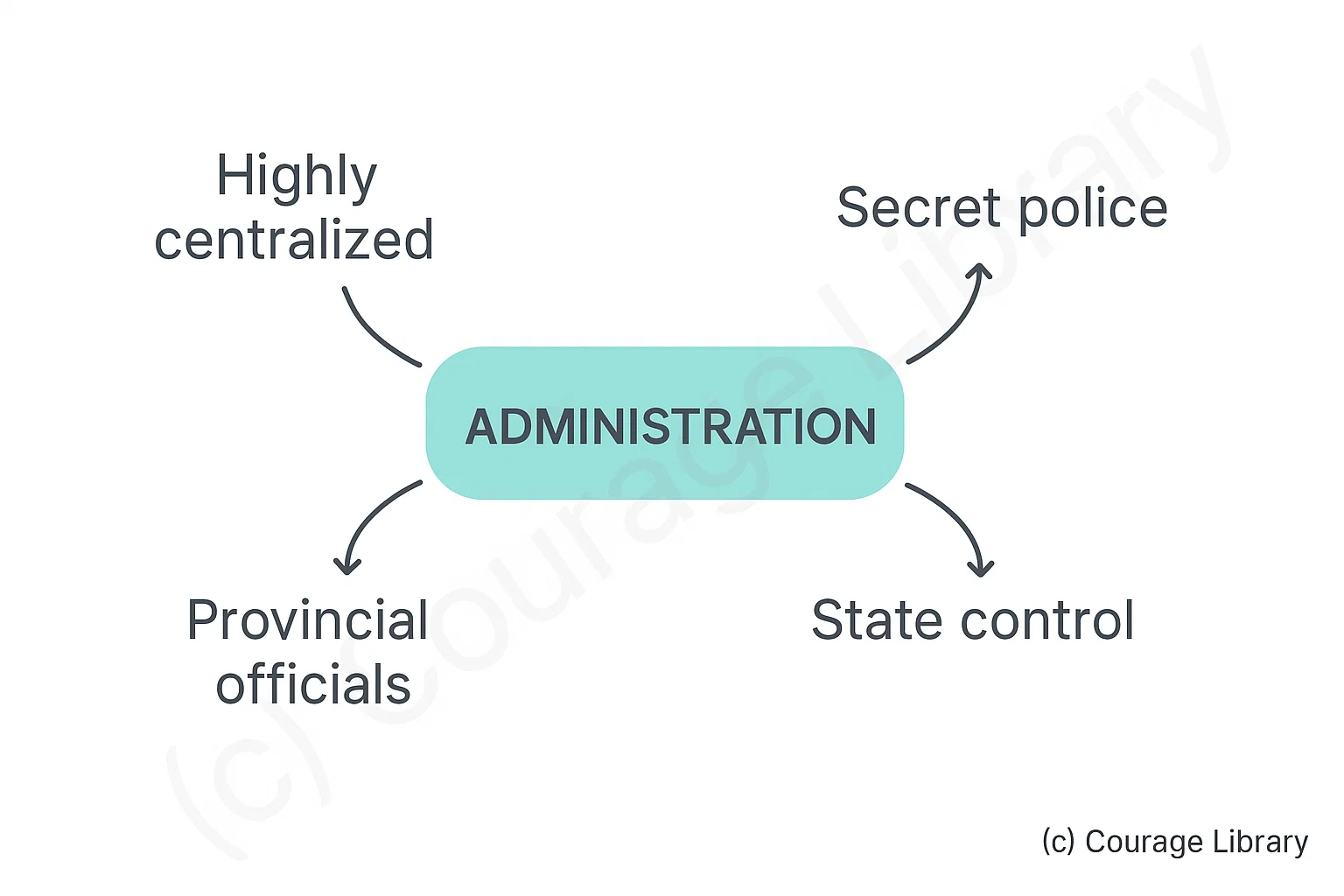
Administration
- Highly centralized government
- Provinces governed by royal officials (Mahamatras)
- Secret police and intelligence network (as per Arthashastra)
- State control over trade, mining, and agriculture
Ashoka’s Contributions
- Kalinga War: Brutal war, led to Ashoka’s conversion to Buddhism
- Promotion of Dhamma: moral code based on non-violence, tolerance, welfare
- Spread of Buddhism within India and abroad (Sri Lanka, Central Asia)
- Edicts of Ashoka: inscriptions on rocks and pillars in Prakrit using Brahmi script
- Famous pillars: Lion Capital of Sarnath (India’s national emblem)
- Public welfare projects: hospitals, roads, water wells
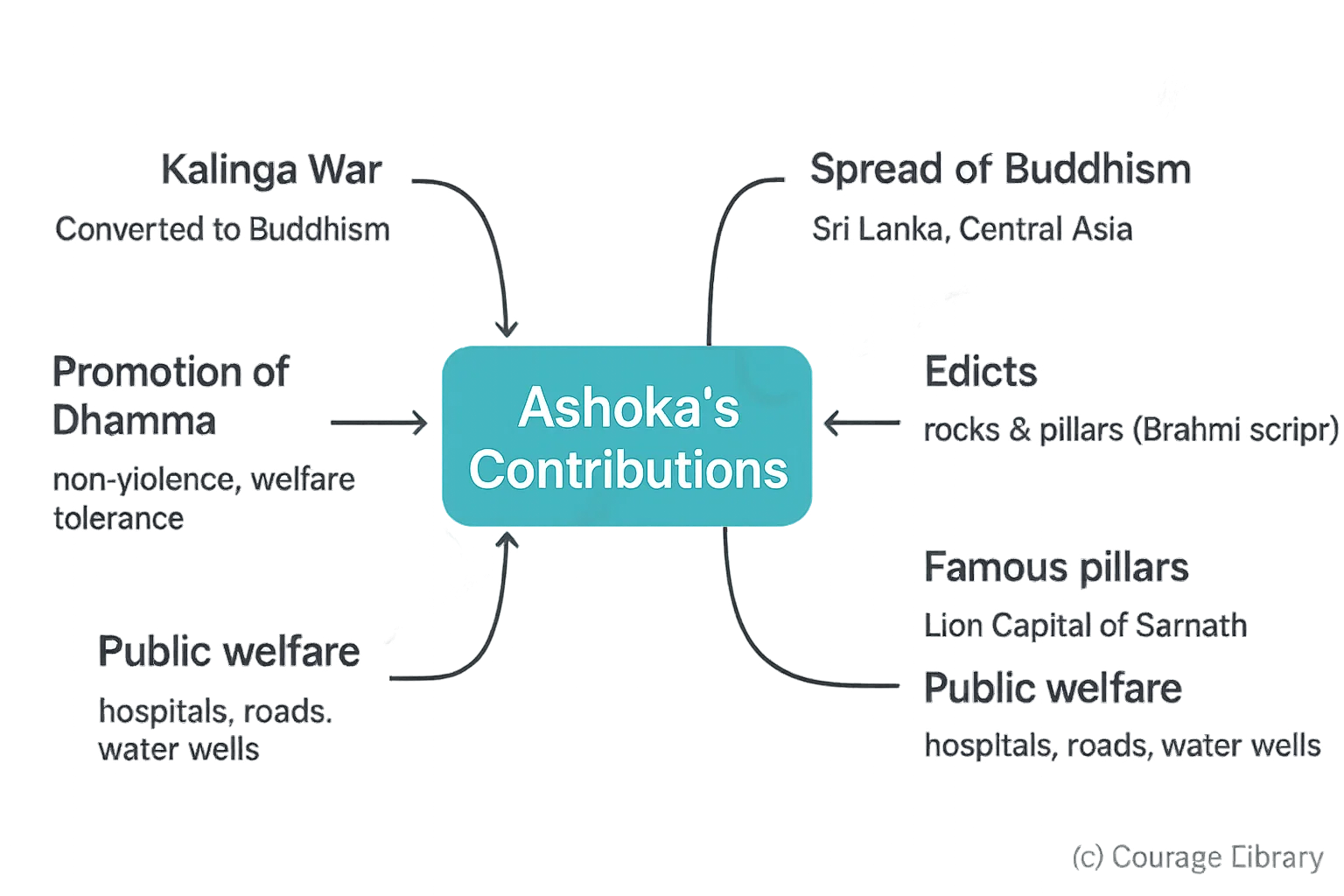

Economy and Trade
- Agriculture mainstay
- State monopoly on key resources (salt, iron)
- Extensive trade networks including contacts with Greece and Central Asia
- Use of standardized coinage
Art and Architecture
- Development of stone architecture: Pillars, Stupas (e.g., Sanchi Stupa)
- Rock-cut caves (Barabar caves for Ajivikas)
- Spread of Buddhist art and symbols
Decline
- Declined after Ashoka’s death due to weak rulers
- Last Maurya ruler Brihadratha assassinated by Pushyamitra Shunga (185 BCE)
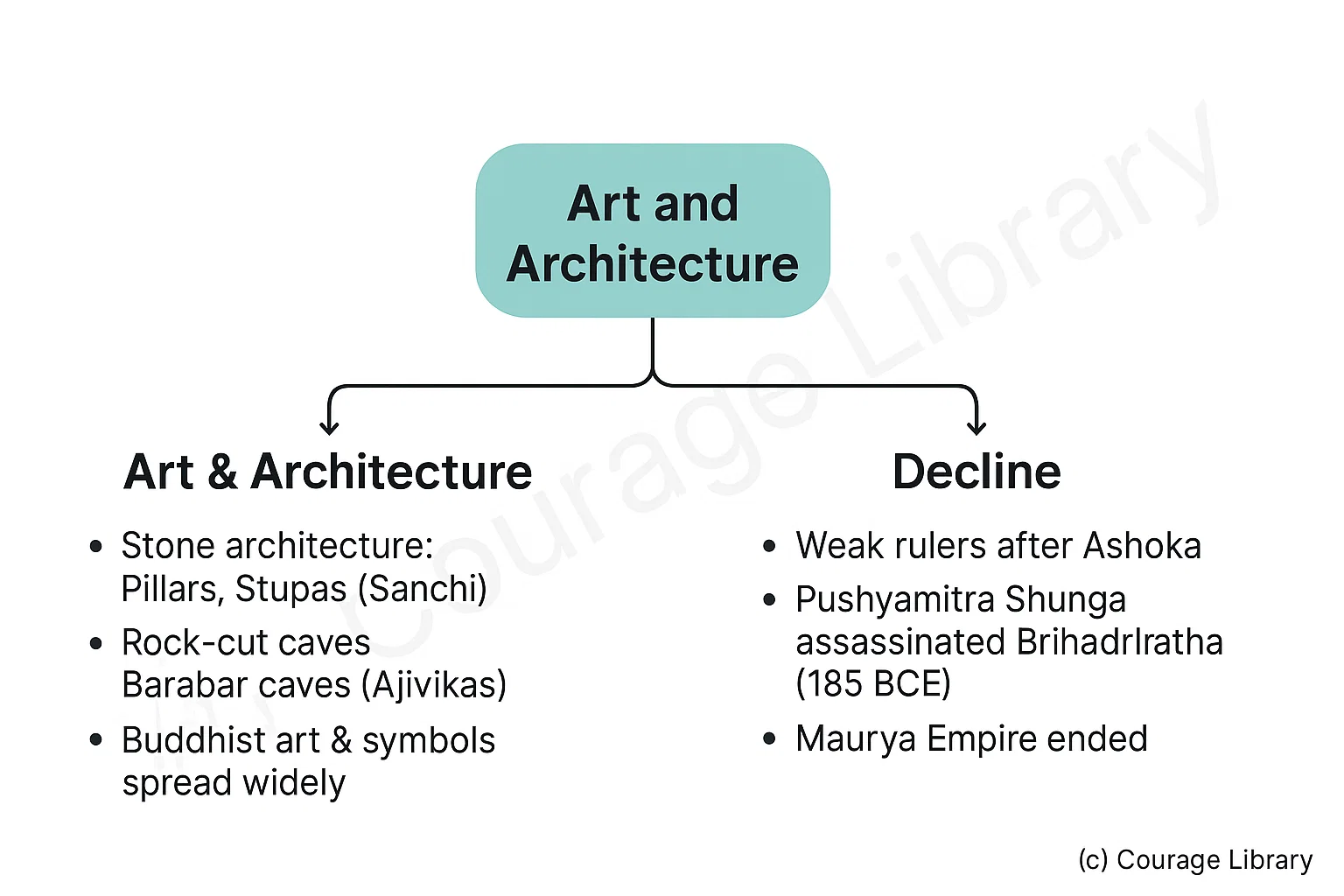
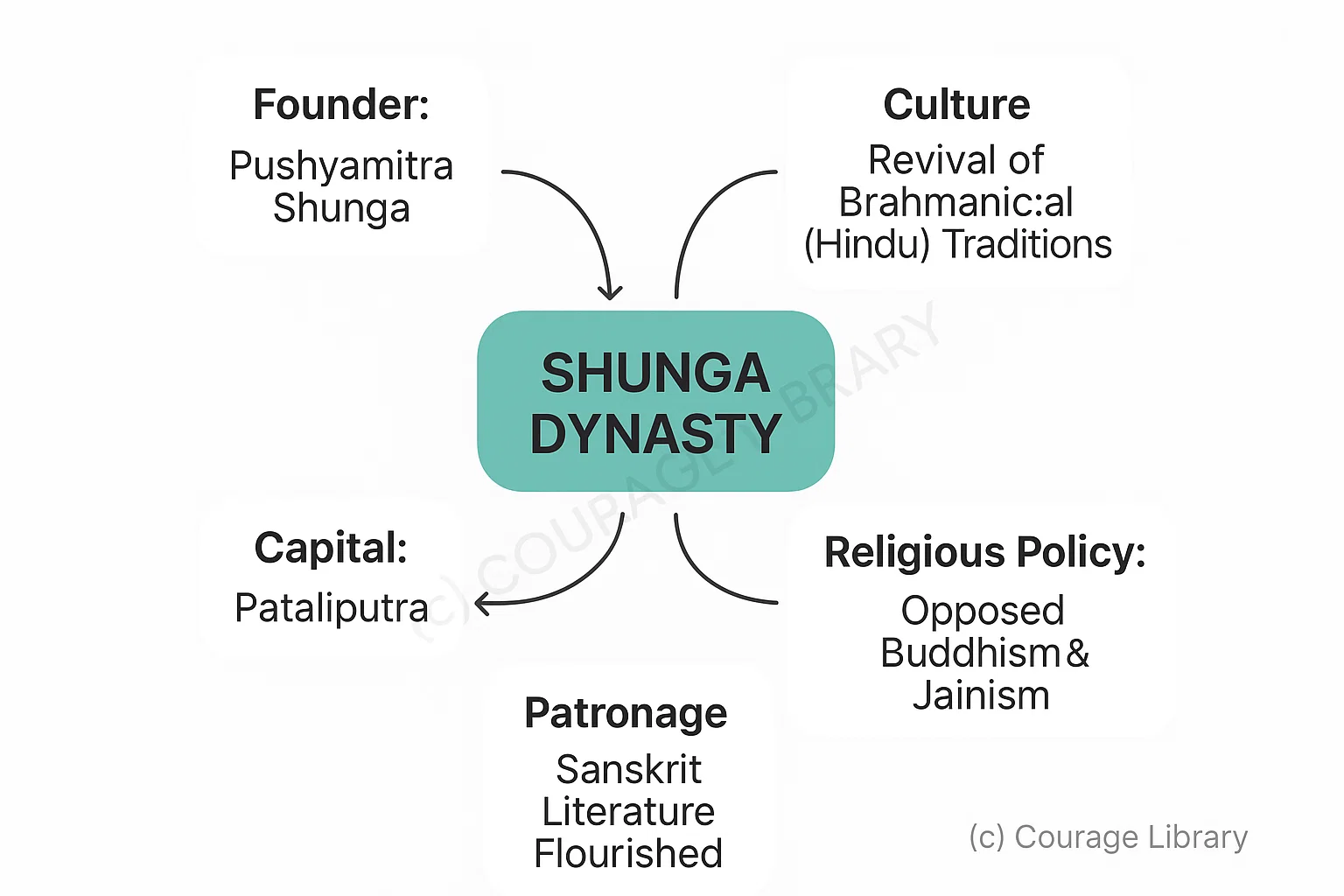
Post-Mauryan Period (185 BCE – 300 CE)
Shunga Dynasty
- Founder: Pushyamitra Shunga
- Revival of Brahmanical/Hindu culture
- Capital: Pataliputra
- Generally opposed to Buddhism and Jainism
- Patronage of Sanskrit literature
Kanva Dynasty
- Succeeded Shungas, short-lived rule
- Also ruled from Pataliputra
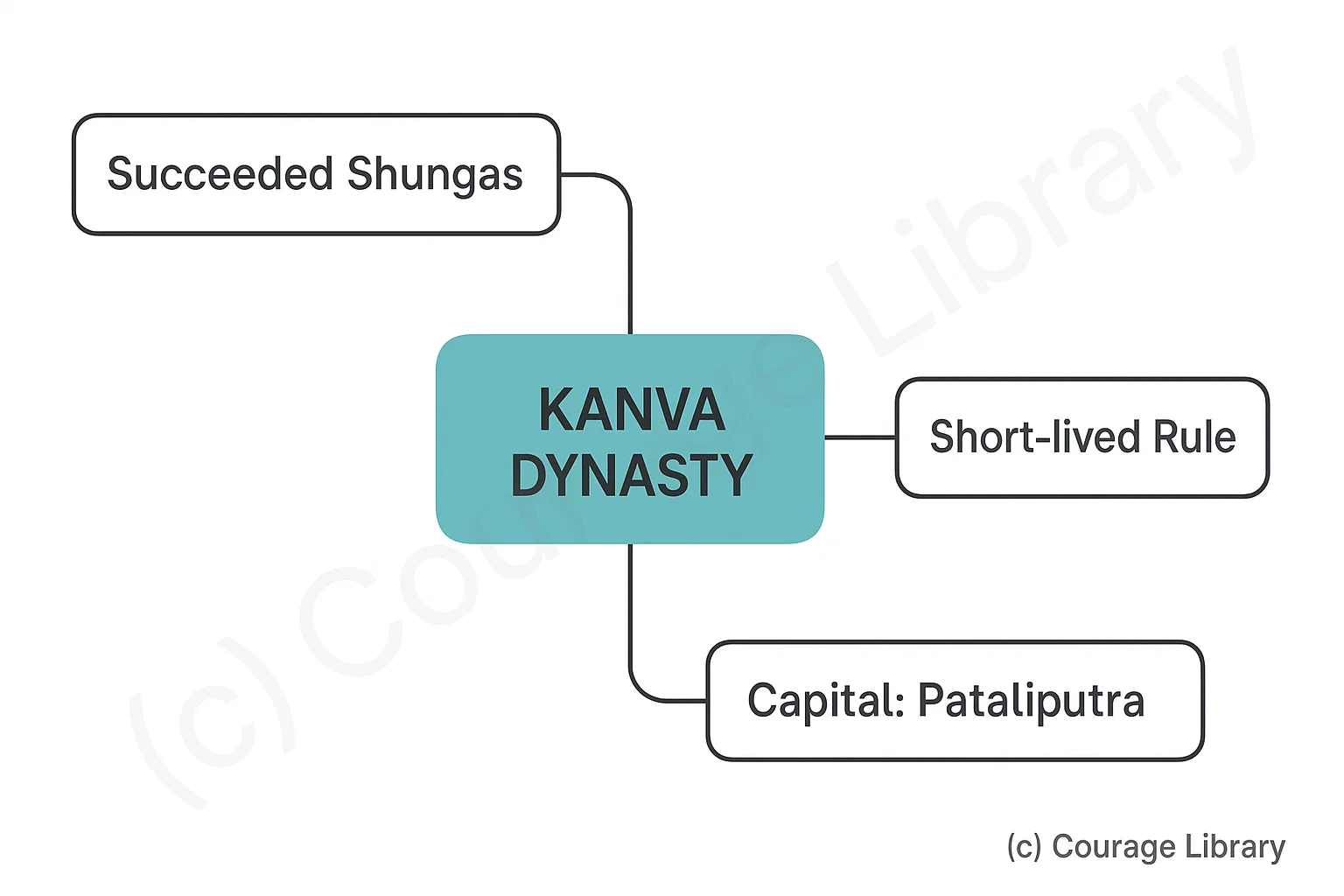
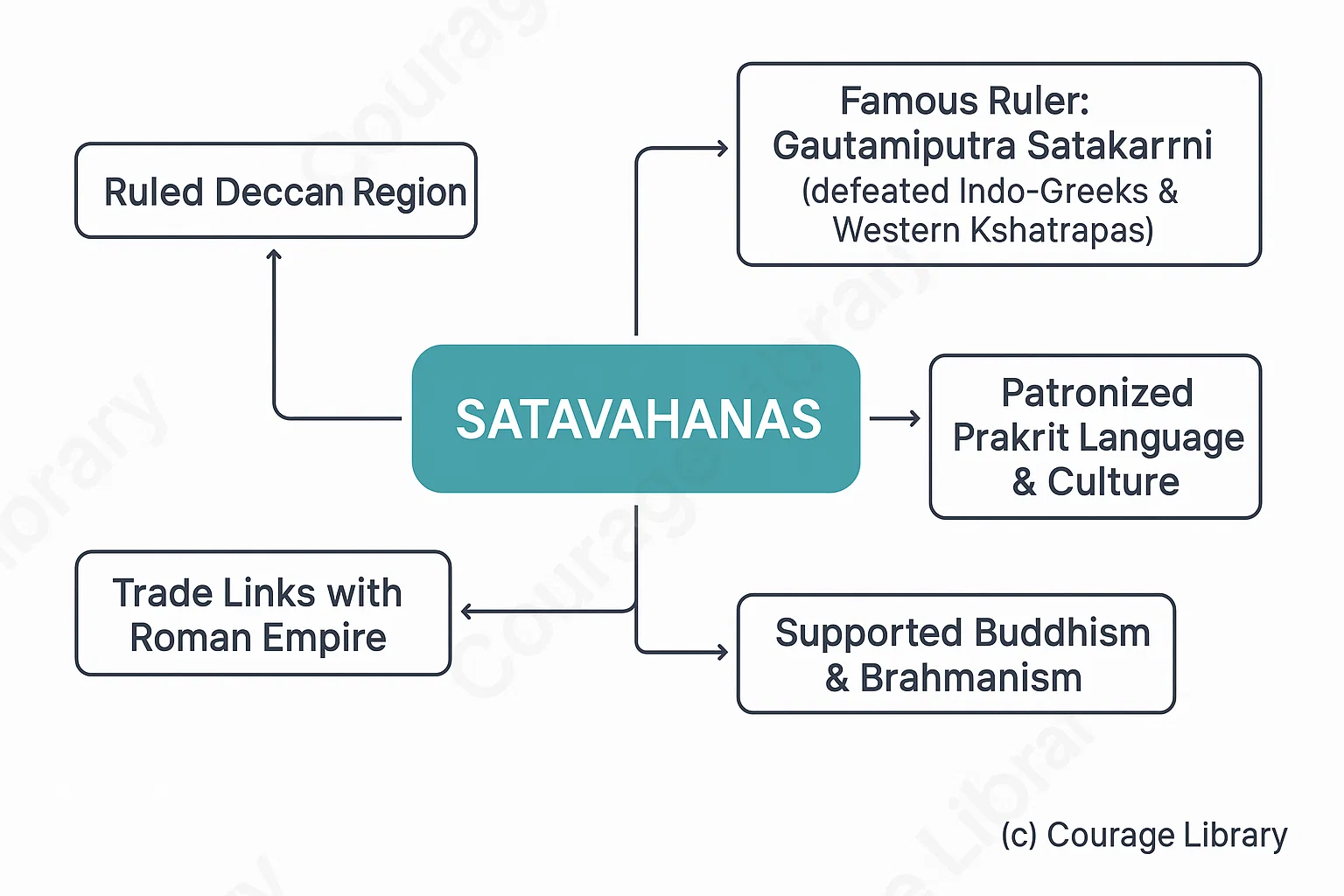
Satavahanas
- Ruled Deccan region
- Capital: Pratishthana (Paithan)
- Famous ruler: Gautamiputra Satakarni (defeated Indo-Greeks and Western Kshatrapas)
- Patronized Prakrit language and culture
- Supported both Buddhism and Brahmanism
- Important trade links with Roman Empire
Indo-Greek Kingdom
- Greek rulers in NW India after Alexander’s successors
- King Menander (Milinda): converted to Buddhism (discussed in Milindapanho)
- Introduced Hellenistic art and coinage
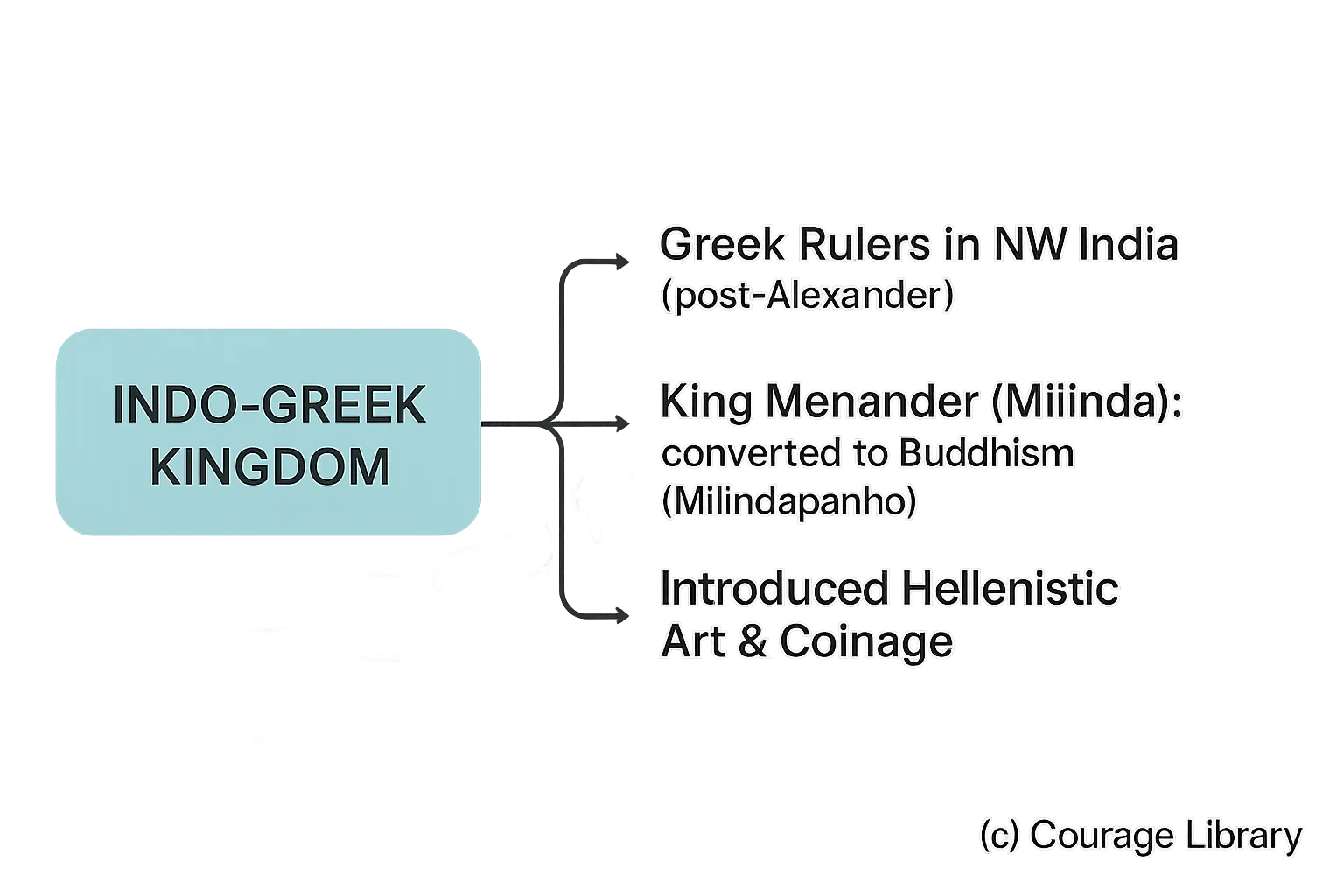
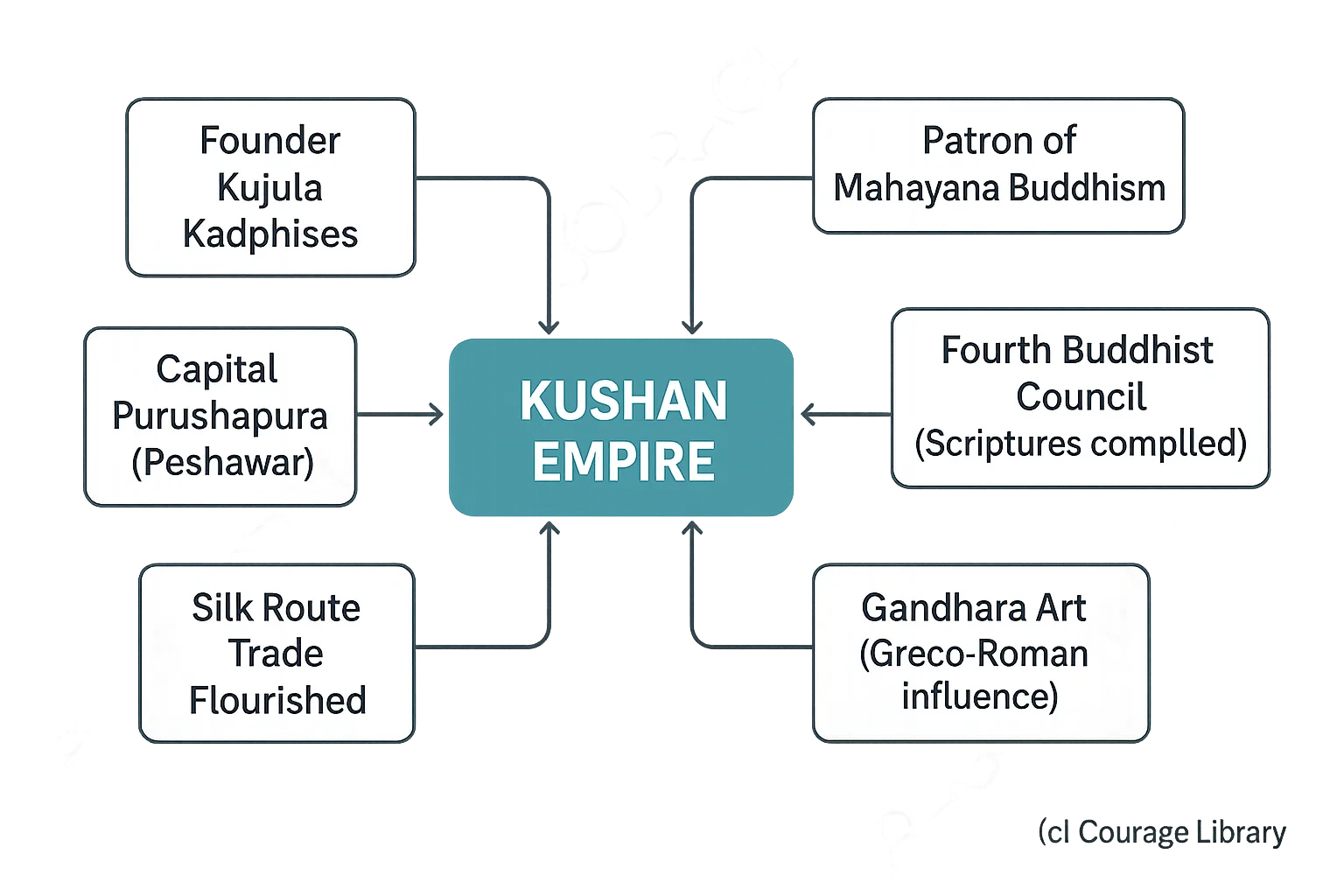
Kushan Empire
- Founder: Kujula Kadphises
- Greatest ruler: Kanishka
- Capital: Purushapura (Peshawar)
- Patron of Mahayana Buddhism
- Convened Fourth Buddhist Council (compiled Buddhist scriptures)
- Developed Gandhara art (Greco-Roman influence)
- Trade flourished via Silk Route
Art and Religion
- Gandhara and Mathura schools of art emerged
- Buddhism divided into Hinayana and Mahayana sects
- Vaishnavism and Shaivism became prominent Hindu sects
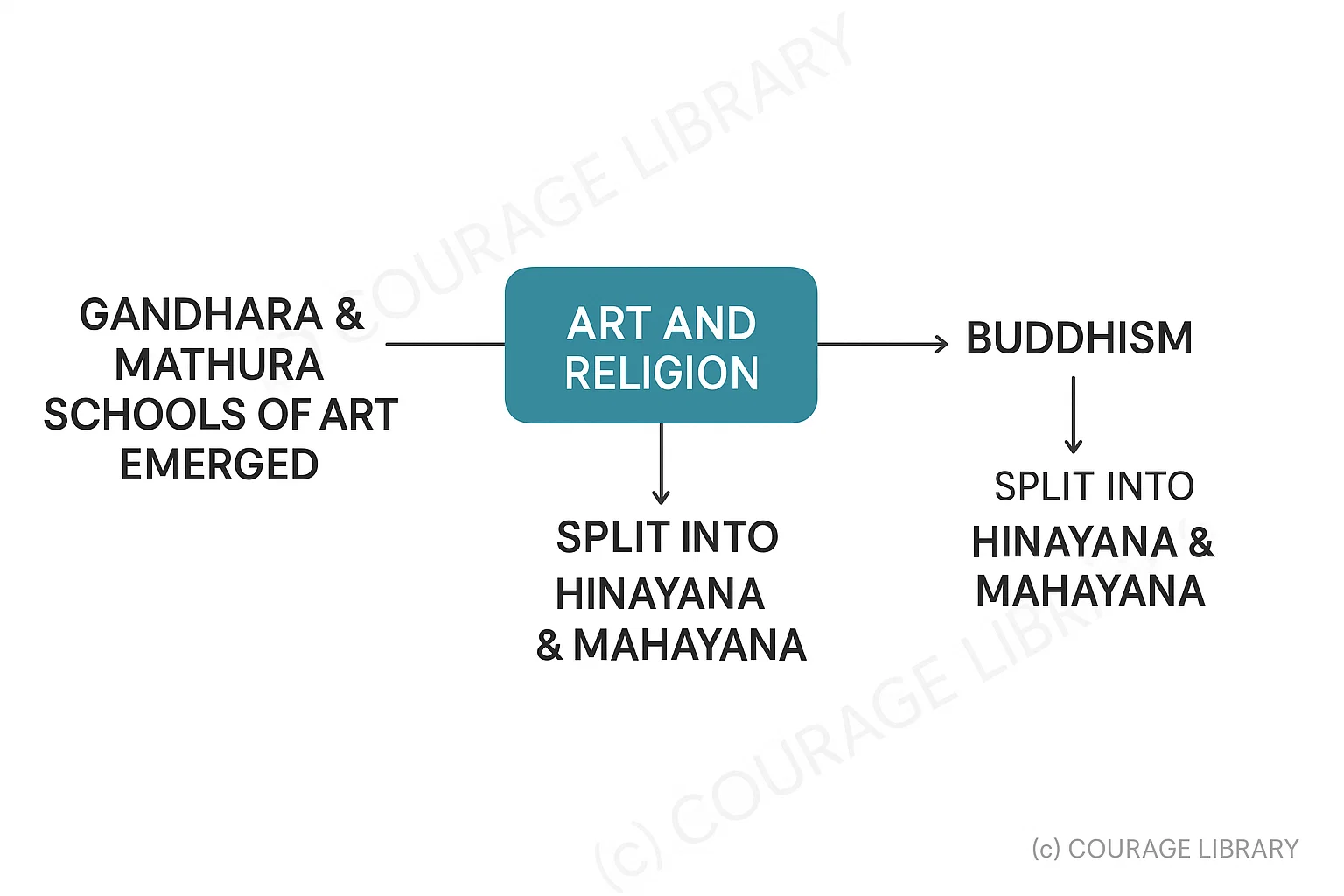
Quick Revision Points
Topic
Important Point
Maurya founder
Chandragupta Maurya
Maurya capital
Pataliputra
Ashoka’s
conversion
After Kalinga War
Ashoka’s edicts
Rock and Pillar Edicts
(Prakrit)
Last Maurya
ruler
Brihadratha
Successor
dynasty
Shunga dynasty
(Pushyamitra)
Satavahana
capital
Pratishthana (Paithan)
Kushan greatest
ruler
Kanishka
Buddhist
council
Fourth Buddhist Council
(Kanishka)
Indo-Greek
ruler
Menander (Milinda)
National emblem
origin
Lion Capital of Ashoka
(Sarnath)
| Topic | Important Point |
|---|---|
| Maurya founder | Chandragupta Maurya |
| Maurya capital | Pataliputra |
| Ashoka’s conversion | After Kalinga War |
| Ashoka’s edicts | Rock and Pillar Edicts (Prakrit) |
| Last Maurya ruler | Brihadratha |
| Successor dynasty | Shunga dynasty (Pushyamitra) |
| Satavahana capital | Pratishthana (Paithan) |
| Kushan greatest ruler | Kanishka |
| Buddhist council | Fourth Buddhist Council (Kanishka) |
| Indo-Greek ruler | Menander (Milinda) |
| National emblem origin | Lion Capital of Ashoka (Sarnath) |
Developed By Jan Mohammad
Next
Start Your SSC CGL Journey Now!
Join Courage Library to experience disciplined study and expert support.
Be a Couragian!